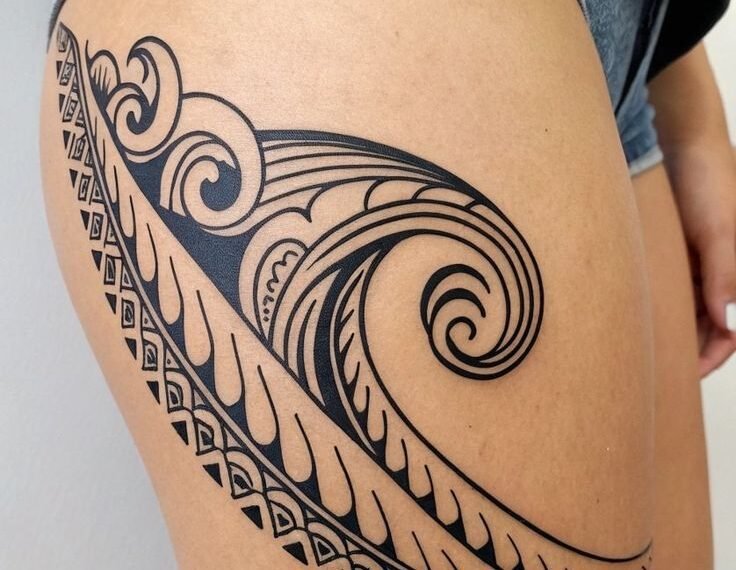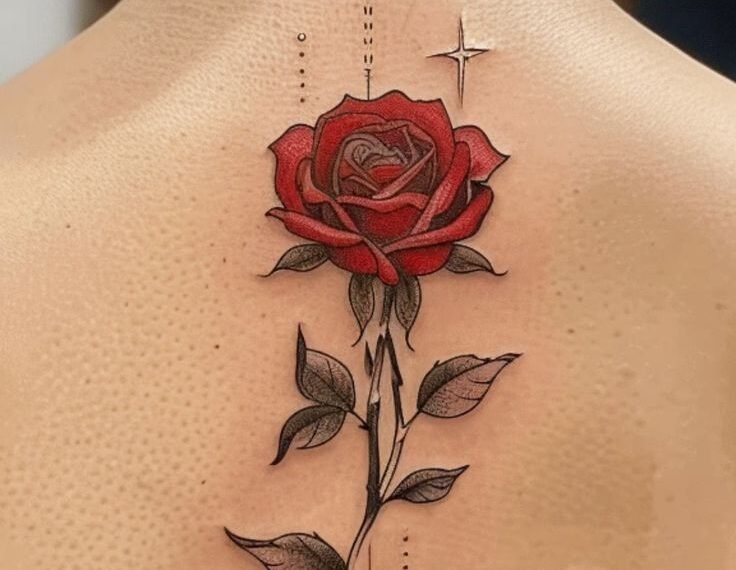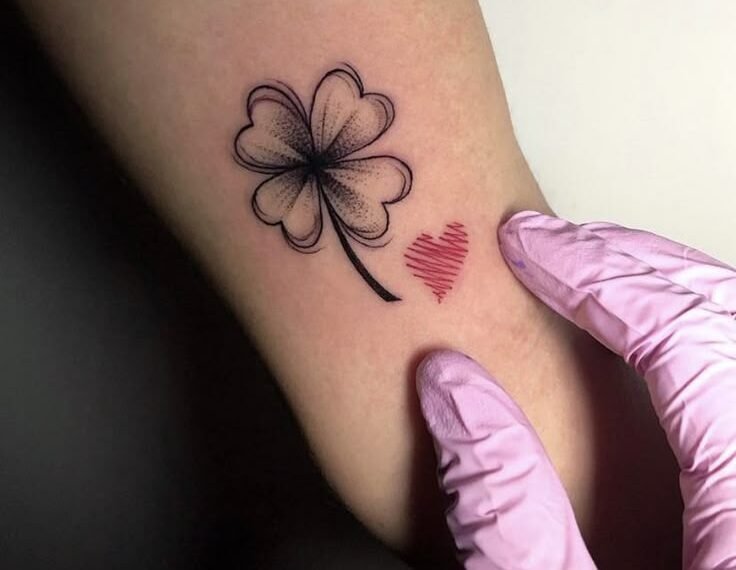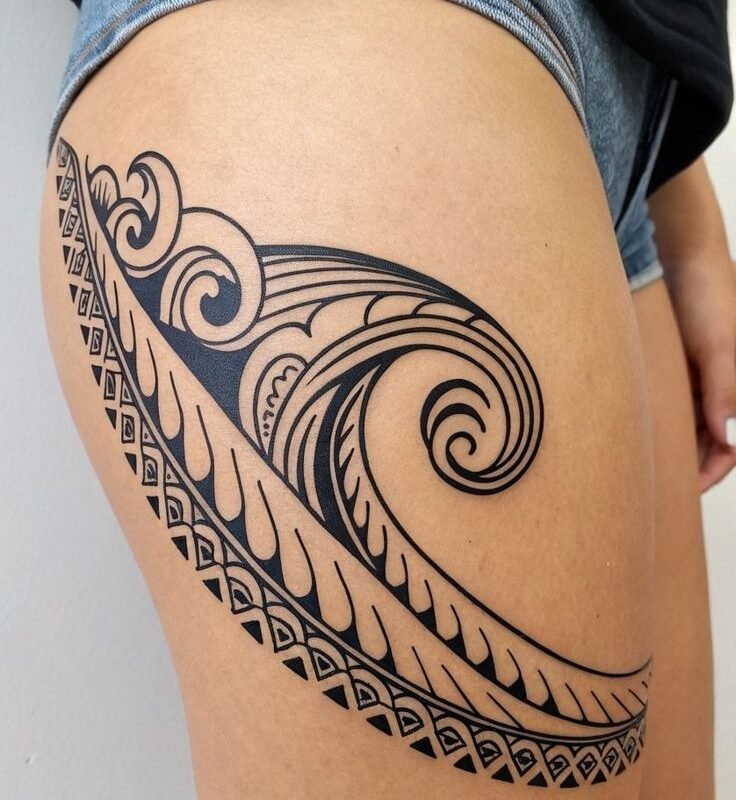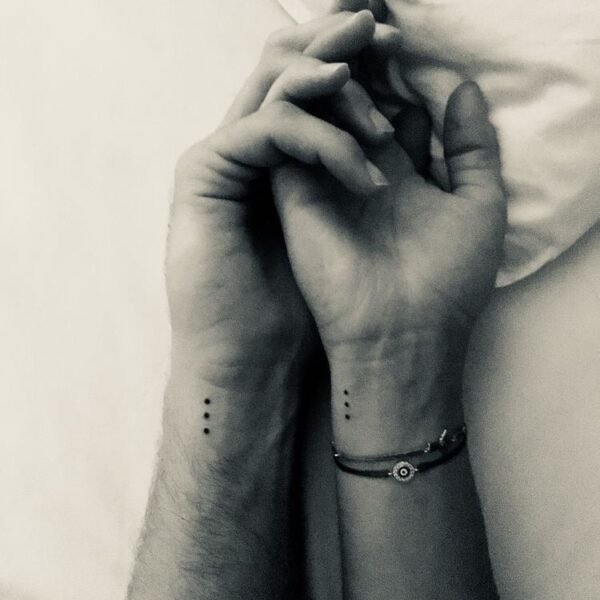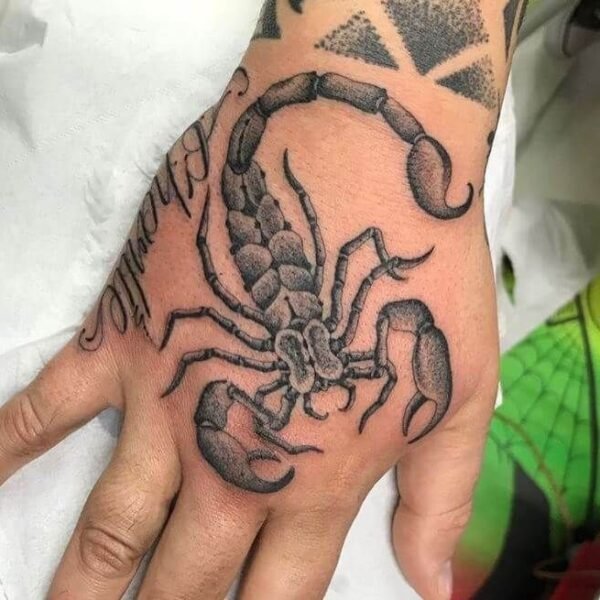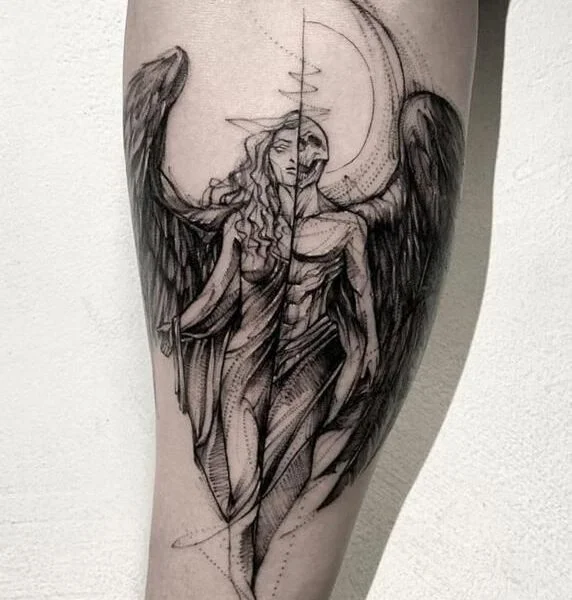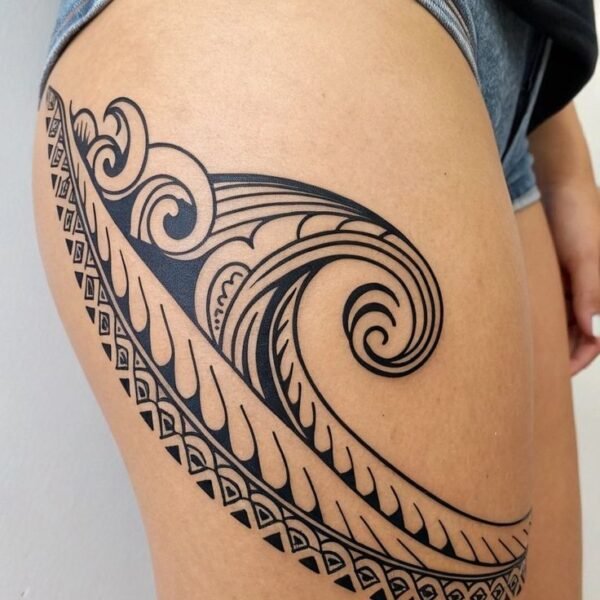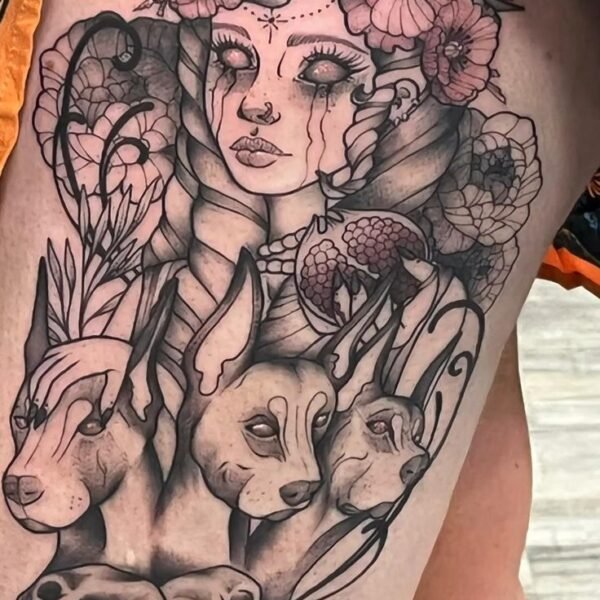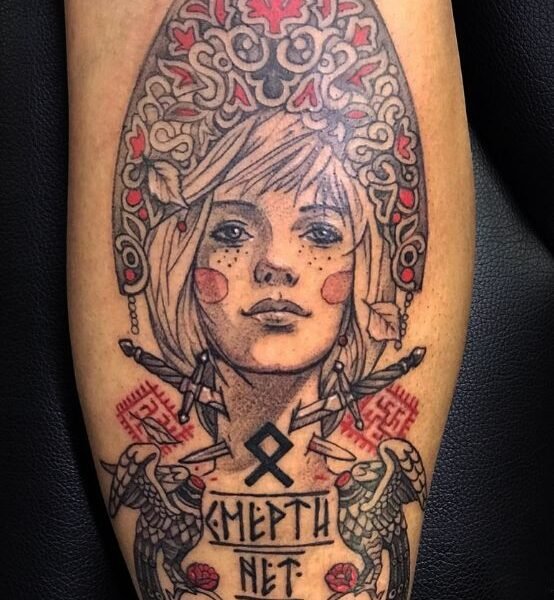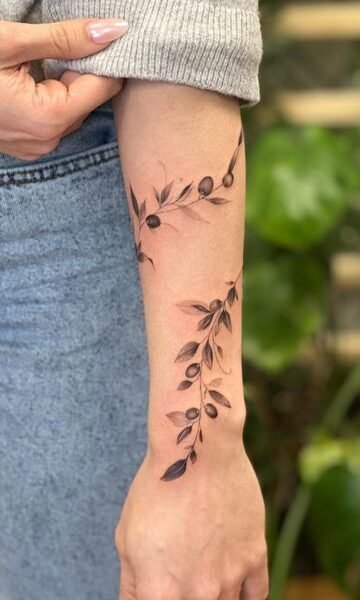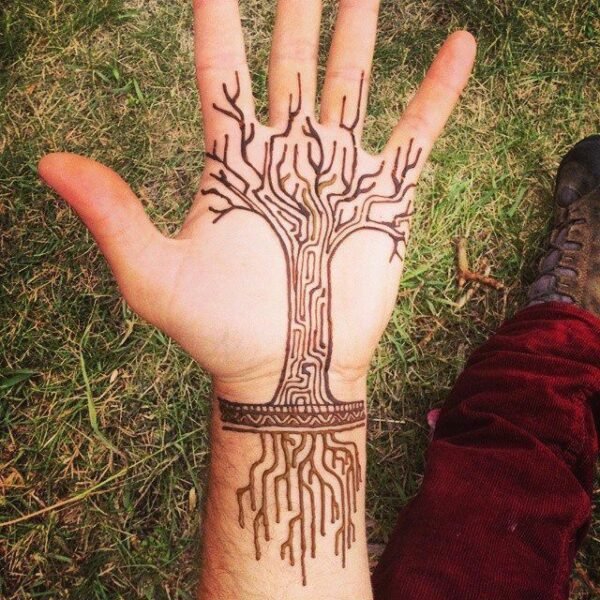Ever wondered What Does a Hannya Mask Tattoo Mean? a striking Japanese demon mask, is so meaningful to those who get it tattooed? The Hannya tattoo symbolism is more than just art. It tells stories of jealousy and revenge. These stories show the deep emotions of humans, like feeling trapped in emotional storms and facing betrayal.
Looking into cultural tattoo symbols, you’ll see how the Hannya mask has changed. It’s no longer just a symbol of a vengeful spirit. Now, it’s a powerful symbol for people, linking them to their inner battles and victories. Knowing what a Hannya mask tattoo means helps us appreciate the deep stories and feelings it carries.

The Origins of the Hannya Mask
The Hannya mask has a deep history in Japanese theater. It combines emotion and art, showing up in many forms over time. Looking into its past shows how it ties to Noh and Kyogen theater.
Historical Background of Hannya Masks
The Hannya mask started in the 14th century with Noh theater’s rise. It shows a woman turning into a demon, filled with jealousy and betrayal. This mask is more than just a prop; it’s a visual of deep emotional pain.
Through these plays, we see how the mask has changed and its role in Japanese art.
Connection to Japanese Folklore
In Japanese stories, the Hannya mask is linked to a bad spirit called a Kijo. These are souls of wronged women, filled with anger and envy. Stories tell of these spirits haunting their past lives, seeking revenge on those who hurt them.
The tales of Hannya masks talk about unmet desires and the deep feelings from lost love. This adds a complex layer to this eerie symbol.
What Does a Hannya Mask Tattoo Mean?
Hannya mask tattoos hold deep meaning tied to complex emotions. They often symbolize the strong feelings of Jealousy and Revenge. This shows how a woman can turn into a demon-like figure because of betrayal. The tattoos show the tough struggles of heartbreak and the darker parts of human feelings.
Symbolism of Jealousy and Revenge
A Hannya mask tattoo is a strong reminder of the bad side of Jealousy and Revenge. It represents the deep pain of a scorned lover. It’s a way for people to show their feelings of heartache through art.
Representations of Emotional Turmoil
Hannya tattoos also stand for Emotional Turmoil Symbolism. They show the inner fights people go through. These tattoos are for those silently dealing with their pain, offering a way to show strength through art.
Hannya Masks in Japanese Theatre
The traditions of Japanese theatre are rich with Hannya masks, seen in Noh Theatre and Kyogen Performance Arts. These masks are key to storytelling, showing deep emotions and cultural symbols. They change the performer into the Hannya character, mixing beauty with fierceness.
Noh and Kyogen Performance Arts
In Noh Theatre, the Hannya mask shows a woman’s soul torn by jealousy and rage. Its detailed looks capture her deep feelings, linking the real and the supernatural. Kyogen Performance Arts uses the Hannya in a comedic way, showing the mix of dignity and silliness. Both styles help the audience see the character’s two sides.
The Dual Nature of Hannya in Performance
The Hannya character in theatre shows a fine balance. Actors show both the monster and the vulnerable person. This mix highlights themes of love and revenge, giving viewers a deep emotional journey. The Hannya mask’s beauty is a key part of Noh Theatre and Kyogen Performance Arts, showing human feelings through Japanese tradition.
The Various Meanings of Hannya Mask Tattoos
Hannya tattoos hold deep meanings that go beyond what many think. They are often seen as symbols of jealousy and emotional turmoil. Yet, they also represent protection and good luck. In Japan, these tattoos are seen as Protection Talismans. They keep away negative energies and bad luck in life.
Talismans for Protection and Good Luck
People with Hannya tattoos see them as Luck Emblems. They guide them through hard times. The design is full of folklore, reminding the wearer of their inner strength and resilience. A Hannya mask tattoo tells a story of personal growth and cultural heritage.
Representations of Betrayal and Anger
Hannya tattoos also show the struggles of betrayal and anger. They serve as reminders of past experiences. These tattoos capture the complex feelings we all go through. The Hannya symbol stands for both the challenges and victories in life.
Hannya vs. Oni Masks: Understanding the Differences
The world of traditional Japanese masks is full of stories and symbols. The Hannya and Oni masks are two examples that show the deep culture and history of Japan. Knowing the differences in Japanese masks helps us see their stories and their place in art and tattoos.
Characteristics of Hannya Masks
Hannya masks come from Japanese Noh theatre. They show a female demon with feelings like jealousy and rage. The mask has horns and big eyes that show the deep feelings inside. It tells a story of change and deep emotions, unlike the Oni masks.
Symbolism of Oni Masks in Japanese Culture
Oni masks show male demons linked to chaos and evil. They symbolize protection and keeping away bad spirits. These masks are important in stories and cultural events. The difference between Hannya and Oni masks shows the rich stories and art of Japan, including Japanese tattoo art. Knowing about these masks helps us value their role in Japanese culture.
Historical Significance of Hannya Masks in Japan
Hannya masks are very important in Japan’s culture and art. They are symbols that tell deep stories of emotion. These stories come from old beliefs and tales. Hannya masks show themes like love, jealousy, and change.
Role in Japanese Art and Literature
Hannya masks are key in Japanese art and literature. They show the hard emotional battles characters go through. In “The Tale of Genji,” Hannya represents the ups and downs of love and betrayal.
Artists over the years have used Hannya to create deep emotional scenes. This makes people think about their own hard times.
Depiction in Traditional Japanese Stories
In many Japanese stories, Hannya masks show the two sides of being human. They mix beauty with fear. These stories talk about the inner struggles of people caught between wanting something and feeling hopeless.
The way Hannya is shown in these stories makes them more powerful. It connects with people on a deep emotional level. This keeps Hannya as a key symbol in Japan’s rich history.
Types of Hannya Masks and Their Colors
The Hannya mask is a key part of Japanese culture, known for its bright colors. These colors have deep meanings. For example, white, red, and dark red masks show different feelings and traits in stories.
Each color is important for showing the deep feelings of the characters.
White, Red, and Dark Red Masks
White masks symbolize purity and nobility, bringing a feeling of calm. Red masks show a lower social status and feelings of jealousy and upset. Dark red masks show the dark side, full of malice and anger.
Learning about these masks helps us understand their complex stories.
Significance of Color in Hannya Toxicology
The colors of Hannya masks mean more than just looking good. They show deep feelings and how society sees good and bad. The colors help tell stories about human feelings and society’s views.
This makes the stories behind the masks richer and more meaningful.
The Hannya Mask in Modern Tattoo Culture
Modern Hannya Tattoos are now very popular. They show off the mask’s unique look and deep meaning. Artists bring new life to this classic design with different styles. You can see everything from traditional Irezumi to modern watercolor and minimalist designs.
Popular Design Variations and Styles
There are many ways to design the Hannya mask, so everyone can find one they like. Some stick with the traditional look, keeping its bold colors and detailed patterns. Others prefer simpler designs or add new elements like flowers, abstract shapes, or lines.
This variety lets people express themselves in unique ways. The Hannya mask has become a way to make a statement in the world of tattoos.
Yakuza Influence on Hannya Tattoos
The Yakuza Tattoo Culture has helped make Hannya tattoos popular. Yakuza tattoos are full of symbols that tell a person’s story. The Hannya mask stands for strength, resilience, and chasing one’s goals.
By getting a Hannya tattoo, people honor its beauty and connect with its deep cultural roots. This mix of old and new makes the Hannya mask a favorite among tattoo lovers around the globe.
Placement Ideas for Hannya Tattoos
Choosing the right spot for a Hannya tattoo is important. Popular spots include the forearm, chest, back, and thigh. These areas give enough space for detailed designs and let the tattoo tell a story.
Each spot has its own special look. It lets the tattoo’s depth and complexity shine.
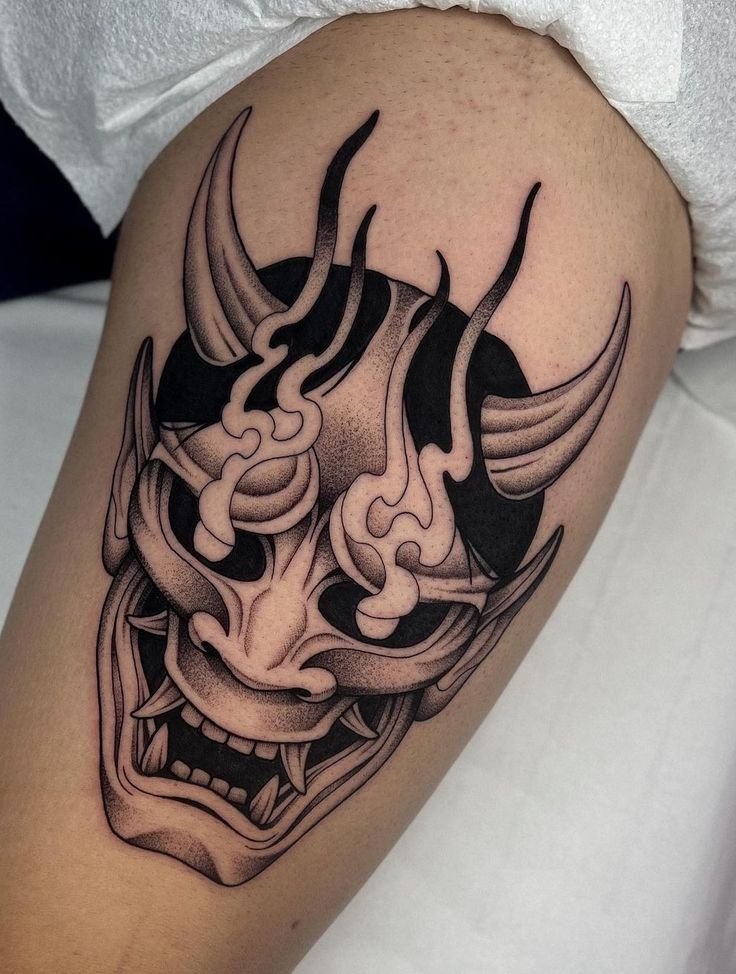
Best Areas for Displaying Hannya Art
The forearm is great for Hannya tattoos because it’s visible and sparks conversations. The chest symbolizes deep emotions. Back tattoos can be the centerpiece, and thigh tattoos are for bold statements.
Choosing the right spot makes the tattoo look better and more meaningful to you.
Combining Hannya with Other Tattoo Elements
Adding other designs to Hannya tattoos makes them more meaningful and beautiful. Flowers, waves, and other symbols are popular choices. These additions bring more stories to the tattoo.
Putting Hannya with these designs makes a strong theme. It boosts the tattoo’s look and story.
The Psychological Implications of Hannya Tattoos
Hannya tattoos carry deep meanings, showing the emotional struggles of those who get them. They symbolize personal battles, like dealing with jealousy and betrayal. By getting a Hannya tattoo, people express and face their deep emotional pain from the past.
These tattoos blend tattoo meanings with personal stories. They show strength and resilience, marking a path to self-acceptance. Wearing a Hannya mask can be a way to release emotions, helping people face their weaknesses. It turns past pain into a drive for growth.
Hannya tattoos link to one’s personal story, showing the power of emotional healing. They prove that emotional struggles shape who we are. This makes Hannya tattoos more than just art; they’re a deep dive into the human soul.
FAQ
What does a Hannya mask tattoo symbolize?
What is the historical significance of Hannya masks?
How do Hannya masks differ from Oni masks?
What colors are associated with Hannya masks and their meanings?
Are Hannya masks considered protective symbols?
How are Hannya tattoos interpreted in modern culture?
Where are the best placements for Hannya tattoos?
What psychological implications do Hannya tattoos hold?

Passionate about tattoos and their profound meanings. My blog is dedicated to exploring the stories and symbolism behind body art. Each tattoo tells a unique story, and my goal is to share these fascinating narratives with my readers.


